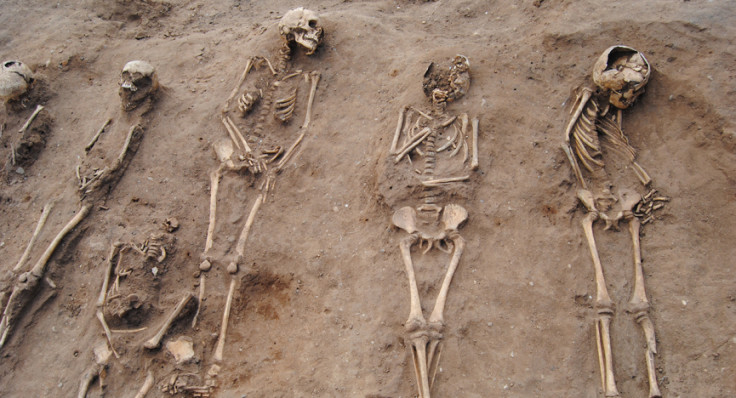The University of Sheffield has discovered a huge burial site at a 14th century monastery in Lincolnshire.
An extremely rare mass grave of plague victims has been discovered at 14th century monastery hospital. The 48 skeletons – 27 of which were children – show how the small community was overwhelmed by the Black Death, one of the worst pandemics in human history.
The bodies were excavated at Thornton Abbey in Lincolnshire by University of Sheffield archaeologists.
The Black Death, which was most likely bubonic plague, claimed the lives of an estimated 75 to 200 million people across Europe between 1346 and 1353.
Dr Hugh Willmott from the University of Sheffield’s Department of Archaeology, who has been working on the excavation site since 2011, said: “The finding of a previously unknown and completely unexpected mass burial dating to this period in a quiet corner of rural Lincolnshire is thus far unique, and sheds light into the real difficulties faced by a small community ill prepared to face such a devastating threat.”
DNA extracted from teeth samples taken from the skeletons revealed the presence of Yersinia pestis, the bacterium responsible for the plague, which is documented to have reached Lincolnshire in the spring of 1349.

The mass grave contained male and female adults and 27 children UNIVERSITY OF SHEFFIELD
Other artefacts were discovered at the site, including a “Tau Cross” pendant, which was used by some people as a cure for a skin condition called St Anthony’s Fire.
The archaeologists now hope to study the bodies further to find out more about their the lives they led in the 14th century.
Dr Diana Mahoney Swales, from the University of Sheffield’s Department for Lifelong Learning, said: “We do this by identifying whether they are male or female, children or adults. And then we start to investigate the diseases that they may have lived through, such as metabolic diseases like rickets and scurvy which are degenerative diseases for the skeleton.
“However for diseases such as plague, which are lethal, we have to use ancient DNA analysis to investigate that further.”
Two 14th century mass graves for plague victims were uncovered in 2013 and 2014 in London, during the construction of the Crossrail project.





